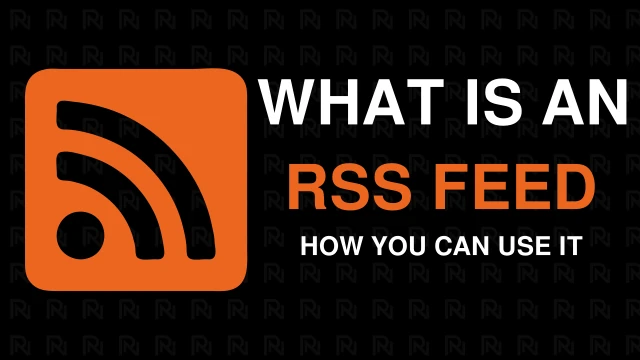What is an RSS feed and how you can use it
Learn how to use RSS to find news content on the web. With RSS you can check if your favorite sites have news without even accessing them!
Rafael Nogueira
November 12, 2024

What is an RSS feed?
The RSS feed was initially launched in March 1999 for the Netscape web browser. Between 2005 and 2006 were the years when the service gained its greatest popularity and use, with its icon appearing on all major web browsers at that time.
The RSS acronym, which can be interpreted as RDF Site Summary or Really Simple Syndication, is a digital content distribution format. It's a way to publish and consume content on the internet like a newspaper. Its delivery method is standardized and automatic, often called "Feeds".
Subscribing to an RSS feed allows users to track multiple websites at the same time and know if they have new content without needing to access them. RSS feed readers can be installed directly on browsers, desktop computers, and mobile devices.
Many websites on the internet use the service to keep their audience connected and informed about any new information that appears. For example, a news site publishing a new article, a new blog post, or even a new podcast available to users.
An RSS document, also known as a "Feed", "Web Feed", or "Channel", includes in its body a title, description, URL, and some metadata such as publication date and content author. Most of the time, the RSS will have a file format of the type ".rss" or ".xml" that can also be interpreted with a URL address.
How does an RSS feed work?
An RSS feed allows users to be notified whenever a site adds new content. Therefore, the user doesn't need to visit the site constantly to look for new content. It's an essential tool for those who frequently visit a large number of sites, isn't it? I've separated some information to help you understand how it works, see below:
- A website or blog creates an RSS file that contains information about the latest updates, such as titles, summaries, and links to articles.
- The RSS file is hosted on the website or blog server and is automatically updated whenever there's a new publication.
- Users can subscribe to the RSS feed using an RSS reader or feed aggregator, which is software or an application that collects and organizes feeds from multiple sites.
- When the user subscribes to the RSS feed, the RSS reader or feed aggregator periodically checks the website or blog's RSS file to see if there are new updates.
- If there are new updates, the RSS reader or feed aggregator downloads the information and displays it to the user, who can then read the updates without needing to visit the original website or blog.
Is RSS still used today?
Yes, RSS is still widely used today, even though its popularity has been declining since its peak in the early 2000s.
Many websites and blogs still offer RSS feeds so that users can stay updated on new content without needing to visit the site regularly. Additionally, many news aggregators and RSS readers are still used by users who want to access a variety of news sources and content in one place.
However, it's worth noting that the popularity of RSS was affected by the rise of social media and news apps, which offer easier and more personalized ways to stay updated on news and content.
Some examples of RSS usage today include:
- News aggregators like Feedly and Inoreader.
- RSS readers like NewsBlur and QuiteRSS.
- News sites that offer RSS feeds, such as The New York Times and BBC News.
- Niche blogs and websites that offer RSS feeds to their readers.
What are the best RSS feed readers?
There are many RSS feed readers available, both free and paid. Here are some of the best RSS feed readers:
Free:
- Feedly: One of the most popular RSS feed readers, with a clean and easy-to-use interface. Available for desktop and mobile devices.
- NewsBlur: An RSS feed reader that allows customization of the interface and filtering of content. Available for desktop and mobile devices.
- QuiteRSS: A lightweight and fast RSS feed reader, with support for multiple feeds and categories. Available for desktop.
- Inoreader: An RSS feed reader that allows customization of the interface and filtering of content. Available for desktop and mobile devices.
Paid:
- Reeder: An RSS feed reader for iOS and macOS, with an elegant interface and support for multiple feeds and categories.
- NetNewsWire: An RSS feed reader for macOS, with a clean interface and support for multiple feeds and categories.
- Awasu: An RSS feed reader for Windows, with a customizable interface and support for multiple feeds and categories.
Others:
- Flipboard: A news app that also supports RSS feeds, with a visually appealing interface.
- Google News: A news aggregator that also supports RSS feeds, with a clean and easy-to-use interface.
It's worth noting that the choice of the best RSS feed reader depends on your personal needs and preferences. Some readers may have additional features, such as support for multiple feeds, categories, and filters, while others may have a simpler and easier-to-use interface.
Would you like to keep up to date whenever we publish something here on our blog? We rely on our RSS Feed to distribute content to our readers. Click here to access our news feed .